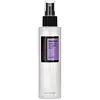What's inside
What's inside
 Key Ingredients
Key Ingredients

 Benefits
Benefits

 Concerns
Concerns

 Ingredients Side-by-side
Ingredients Side-by-side

Melaleuca Alternifolia Leaf Extract
PerfumingDipropylene Glycol
HumectantCentella Asiatica Extract
CleansingButylene Glycol
HumectantMelaleuca Alternifolia Flower/Leaf/Stem Extract
Skin ConditioningBetaine
HumectantPanthenol
Skin ConditioningSodium Citrate
BufferingCitric Acid
BufferingMelaleuca Alternifolia Leaf Oil
AntioxidantBetaine Salicylate
AntimicrobialXanthan Gum
EmulsifyingWater
Skin ConditioningEthylhexylglycerin
Skin ConditioningPentylene Glycol
Skin ConditioningOctyldodeceth-16
EmulsifyingCholeth-24
EmulsifyingMelaleuca Alternifolia Leaf Water
Antimicrobial1,2-Hexanediol
Skin ConditioningTocopherol
AntioxidantMelaleuca Alternifolia Leaf Extract, Dipropylene Glycol, Centella Asiatica Extract, Butylene Glycol, Melaleuca Alternifolia Flower/Leaf/Stem Extract, Betaine, Panthenol, Sodium Citrate, Citric Acid, Melaleuca Alternifolia Leaf Oil, Betaine Salicylate, Xanthan Gum, Water, Ethylhexylglycerin, Pentylene Glycol, Octyldodeceth-16, Choleth-24, Melaleuca Alternifolia Leaf Water, 1,2-Hexanediol, Tocopherol
 Reviews
Reviews

Ingredients Explained
These ingredients are found in both products.
Ingredients higher up in an ingredient list are typically present in a larger amount.
1,2-Hexanediol is a synthetic liquid and another multi-functional powerhouse.
It is a:
- Humectant, drawing moisture into the skin
- Emollient, helping to soften skin
- Solvent, dispersing and stabilizing formulas
- Preservative booster, enhancing the antimicrobial activity of other preservatives
Betaine Salicylate is considered a salicylic acid alternative.
Limited studies exist proving this ingredient to be a complete alternative to salicylic acid. Based on existing research, this ingredient does not penetrate as deeply and is not shown to be as effective.
However, this makes it a great choice for those with sensitive skin or need gentle BHA action.
This ingredient is created using betaine and salicylic acid.
This ingredient is oil-soluble and is most effective at a pH range of 3.8-4.2.
Learn more about Betaine SalicylateButylene Glycol (or BG) is used within cosmetic products for a few different reasons:
Overall, Butylene Glycol is a safe and well-rounded ingredient that works well with other ingredients.
Though this ingredient works well with most skin types, some people with sensitive skin may experience a reaction such as allergic rashes, closed comedones, or itchiness.
Learn more about Butylene GlycolPanthenol is a common ingredient that helps hydrate and soothe the skin. It is found naturally in our skin and hair.
There are two forms of panthenol: D and L.
D-panthenol is also known as dexpanthenol. Most cosmetics use dexpanthenol or a mixture of D and L-panthenol.
Panthenol is famous due to its ability to go deeper into the skin's layers. Using this ingredient has numerous pros (and no cons):
Like hyaluronic acid, panthenol is a humectant. Humectants are able to bind and hold large amounts of water to keep skin hydrated.
This ingredient works well for wound healing. It works by increasing tissue in the wound and helps close open wounds.
Once oxidized, panthenol converts to pantothenic acid. Panthothenic acid is found in all living cells.
This ingredient is also referred to as pro-vitamin B5.
Learn more about PanthenolWater. It's the most common cosmetic ingredient of all. You'll usually see it at the top of ingredient lists, meaning that it makes up the largest part of the product.
So why is it so popular? Water most often acts as a solvent - this means that it helps dissolve other ingredients into the formulation.
You'll also recognize water as that liquid we all need to stay alive. If you see this, drink a glass of water. Stay hydrated!
Learn more about Water